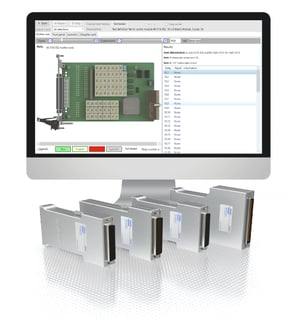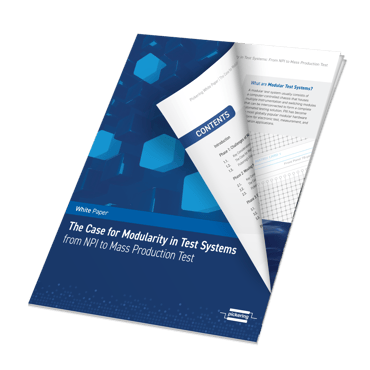Test Systems for New Products: The Case for Modularity, Part 3
When it comes to designing and manufacturing automated functional test systems, today’s engineers find that modularity is key. By using modular hardware, organizations can more effectively manage test equipment from new product introduction (NPI) through to mass/high-volume production.
In this three-part series, we will explore key considerations for creating modular test systems that can evolve through every phase of the product lifecycle. This article focuses on test systems when moving from NPI to high-volume testing, see Part 1 about test systems for new products here and Part 2 about moving to high-volume production here.
As products grow and evolve, support will always be a factor – it’s inevitable that a test system will need to be modified or components will require replacement. Because of this, the following considerations set production test systems up for long-term success through the entire product lifecycle:
 1. Minimize the Opportunity for Errors at Every Point
1. Minimize the Opportunity for Errors at Every Point
Every duplicated test system should produce the same test results, so engineers should look for quality and consistency of performance across multiple test systems. Interconnect can easily be a failure point as the DUTs are mechanically connected and disconnected. Other points of error can be due to faulty instrumentation, unreliable or mis-matched signal paths that impact signal integrity, or operator error. Regular maintenance checks, knowledge of expected component life, and high-quality documentation all help mitigate these risks.
2. Use Industry-Standard Tools
When the test system is out of NPI and moves to production, it has to be easy to use and debug, and adapt to design changes. Industry-standard test hardware and software provide familiarity, scalability and flexibility, streamlining the tester deployment.
3. Work with Reliable Providers
Reliable test equipment vendors and system integrators offer consistent, documented products and tools. Engineers can rely on these providers for long-term support of their products, obsolescence management, and timely updates to enhance the test systems with the latest operating system changes.

Modular Systems as Products Evolve
Modular systems offer improved scalability compared to fixed systems as it is generally much easier to add or remove modules from a modular system to increase or decrease its capacity. This scalability can be particularly important in applications where test requirements may change over time (e.g., new products added to a manufacturing line).
Typically, PXI vendors have common families of instruments and switching modules, so engineers can seamlessly scale up within that family to add I/O connections, for example. Interconnect accessories for modular instruments are also typically readily available. PXI’s compatibility with mass interconnect provides long-term consistent connection and reduced errors and fault points. And, custom cables can also quickly be designed via easy-to-use graphical tools to meet future connectivity demands.
The PXI Systems Alliance, PXISA, governs the PXI standard, continuing to upgrade its hardware and software and thereby reducing the risk of obsolescence. All of these straightforward upgrades protect the original equipment investment.
This reusable equipment allows organizations to quickly pull together a test set for a similar new product with minimal design effort.
Pickering’s Expertise in Long-Term Support for Evolving Test Systems
Pickering is known for its commitment to long-term product support. Pickering’s success in growing its modular signal switching and simulation business – most recently achieving 25% YOY growth – hinges on the company’s ability not just to help customers manage obsolescence, but to help them minimize the chances of it occurring.






